every so often I talk in class about the importance of establishing a yoga practice at home…..this is when teh transformational power of yoga really starts to make its presence felt in your life…so here are my top tips for how to get started
xx
Michelle
Why is it that all the things in life that are good for you like eating All Bran for breakfast and drinking lots of water and walking instead of driving and being nice to people are so much harder to do than the deliciously bad things? (croissants, pinot grigio, porsches, being mean when you are having a bad day).
This has always been my issue with establishing a home practice. I know that committing even 20 minutes to my mat will leave me feeling perkier all day (not to mention proud of myself which can be very helpful when the black dog of depression has sunk it’s teeth so deep into your backside you fear you will never sit again….) so why did I avoid it for such a very long time?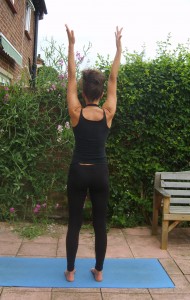
I have been practicing yoga for about two decades, but hand on heart, I could only say I have had an established home practice for about the last six years. Prior to that I often attended four or five classes a week, as well as private lessons, but in between times that mat stayed beautifully rolled up and stowed away in my kit bag with all my other props, and it did not occur to me to roll it out on the living room floor and have a wriggle by myself. I suppose I had just got into the habit of being told what to do by a teacher, and maybe thought that I wouldn’t remember what we had done when I got home. Truth is, my body often could remember, if I didn’t overthink it, and let my mind get too involved with the process.
I reached a point in my practice where I felt ready to tackle some of the poses I had always thought would be permanently out of reach for me, like an Upavista Konasana (wide legged seated forward fold) where I was not just sitting bolt upright with screaming hamstrings, or some of the quirkier inversions like pinchamayurasana (the elbow balance/scorpion) and I was curious as to why I still couldn’t do them. The short answer was, with tight hamstrings, a damaged knee, a stiff upper back a weak core and unstable shoulders I just wasn’t putting in the spade work that would lead to the requisite level of fle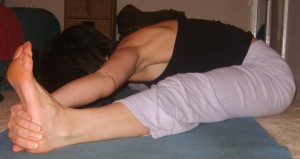 xibility and strength for me to get near these poses safely. So I started to practice every day, didn’t plan to, it just kind of started. And the gains were subtle, and barely noticeable at first. A few years into my self-practice, I sat on my mat one day, legs wide, ready to try my upavista konasana, and my body just started moving forwards….and it didn’t hurt…..
xibility and strength for me to get near these poses safely. So I started to practice every day, didn’t plan to, it just kind of started. And the gains were subtle, and barely noticeable at first. A few years into my self-practice, I sat on my mat one day, legs wide, ready to try my upavista konasana, and my body just started moving forwards….and it didn’t hurt…..
One day I decided to set myself up for the scorpion pose, with a slightly furrowed brow, and a wall nearby in case of disaster, and this time, my legs popped up, my newly found and duly exercised core muscles held me in place, and my shoulders felt spacious and strong and this, at a time in my life when I felt like the reins were slipping from my hands on many levels. Suddenly I could do something that I had not been able to do before. Psychologically the benefits were huge.
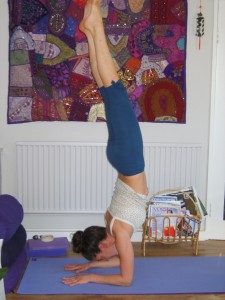 Finding that I could do things on my mat that I thought I could never do made me begin to wonder what other things I could do that I thought I never could…could I disengage myself from an unhealthy friendship, could I make firmer boundaries for my kids without feeling like a prison warden, could I leave a relationship that was stopping me from evolving, could I make time and space in my week to relax, could I become tee-total…the list was pretty long and the answer to them all was…I could if I chose to.
Finding that I could do things on my mat that I thought I could never do made me begin to wonder what other things I could do that I thought I never could…could I disengage myself from an unhealthy friendship, could I make firmer boundaries for my kids without feeling like a prison warden, could I leave a relationship that was stopping me from evolving, could I make time and space in my week to relax, could I become tee-total…the list was pretty long and the answer to them all was…I could if I chose to.
For me, the practice of physical yoga is inseparable from the philosophy that underpins it. As I read my Patanjali’s Yoga Sutras (I would say a must-read for all students of yoga) often throwing it across the room in frustration, I began to understand that I had tried to practice yoga without the correct discipline, the Sanskrit word that struck me was Tapas meaning to burn, to create heat. I wanted to have a well-rounded yoga practice, but I didn’t want to spend an hour or two on my mat at least 6 days a week, working on my weak and tight areas diligently. And I had every excuse: I am a single Mum to two kids, I run my own business, I am my own accountant, gardener, handy-woman, cook, cleaner, I work full-time blah blah blah…..
To me this is what Tapas meant. Despite all of my excuses, I wanted to find a way to practice diligently. The circumstances were not always perfect: I have practiced yoga in a room where every three minutes (or so it seems)a teenager will hurtle past with requests for snacks, batteries for X-box controllers, money for the bus, consent forms for a school trip that have to be in today etc etc etc but I am still practicing. I was actually a bit wary of a diligent practice taking me away from my beloved family (eh-hem….I often wanted to escape) as I felt pretty sure that having two well-balanced kids was more important than a perfect forward fold, so I found ways to make it work in the fabric of my real life, which is characterised by piles of dirty laundry and burnt pans soaking in the kitchen sink.
I had to learn to temper tapas with santosha (contentment) and ahimsa (non-harm). I was OK with not being able to do poses (still am come to that) and I have never been a fan of the push-it-til-you-scream-and-are-so-sore-the-next-day-you- can’t -walk approach, but I did have to learn to adapt my practice. If I had been up all night with one of the kids coughing and vomiting, then to get on my mat the next day and do 12 rounds of sun salutations would have been an act of unkindness against my weary body. So on those days, out came the bolsters, and I had to give myself a stern talking too, about why my practice that day would probably not get off the floor, or for that matter out of savasana (relaxation/corpse pose). And I did learn the hard way. My natural setting is to work hard, harder, hardest, and to feel guilty if I don’t ‘achieve’ things, many things, countless things possibly every single day that I draw breath…but what a weary way to live….
The art of doing nothing is till a work in progress for me, but I will sit and watch the birds in the garden in the morning before I get my mat out, or park myself in a coffee bar and people watch for an hour (as long as t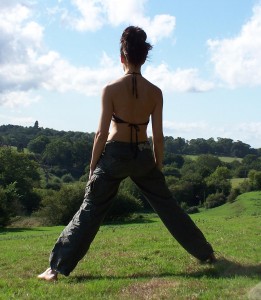 here is plenty of cake available..) and there is no ‘product’ for me to inspect at the end, nothing has been crossed off my to-do list….for me, this is radical!
here is plenty of cake available..) and there is no ‘product’ for me to inspect at the end, nothing has been crossed off my to-do list….for me, this is radical!
So, after that long ramble, back to home practice.
Here are my top tips:
- if you have the space, leave your mat out. You are more likely to get on it if it is there already.
- focus on what you can do: cat stretch? Down dog? Sphinx? Triangle? Following the breath?
- keep a journal of your practice.
- if time is short, weave your yoga into your day, for example, washing up, stand on one leg, ironing, engage the leg muscles, watching TV lie on your tummy and have a back bend.
- enjoy your practice, don’t let it become another burdensome entry on your to-do list.
- commit to ten minutes a day, five days a week. You may find you are still on your mat half and hour later.
- find someone in class who is trying to establish a home practice and arrange to practice together.
- know that YOU are the best yoga teacher you will ever encounter, have faith that you will know what is best for you, and let your practice be led by you listening to your body.
- don’t skip relaxation, even if you have done a ten minute practice, lie on the floor, and count off ten long breaths before you get up and go on with your day.
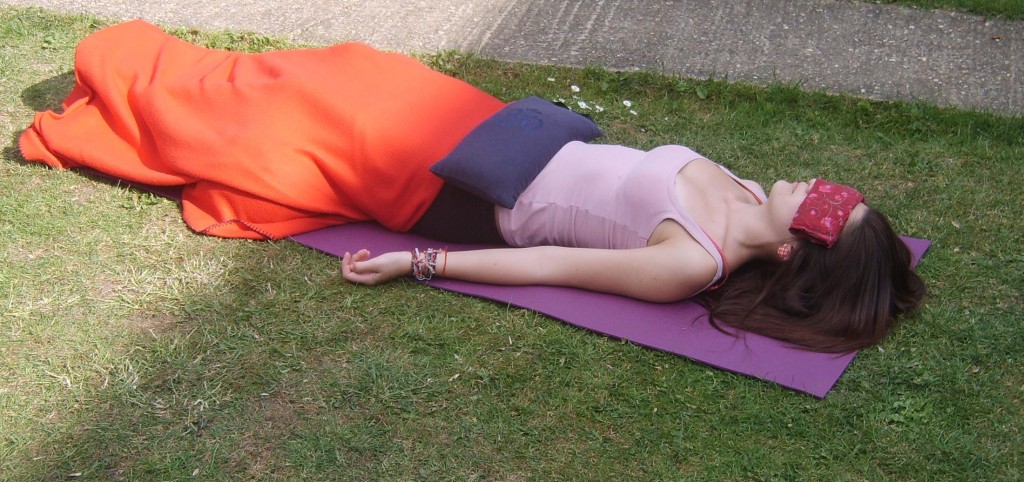
Love Light and Peace
Michelle
xxx
